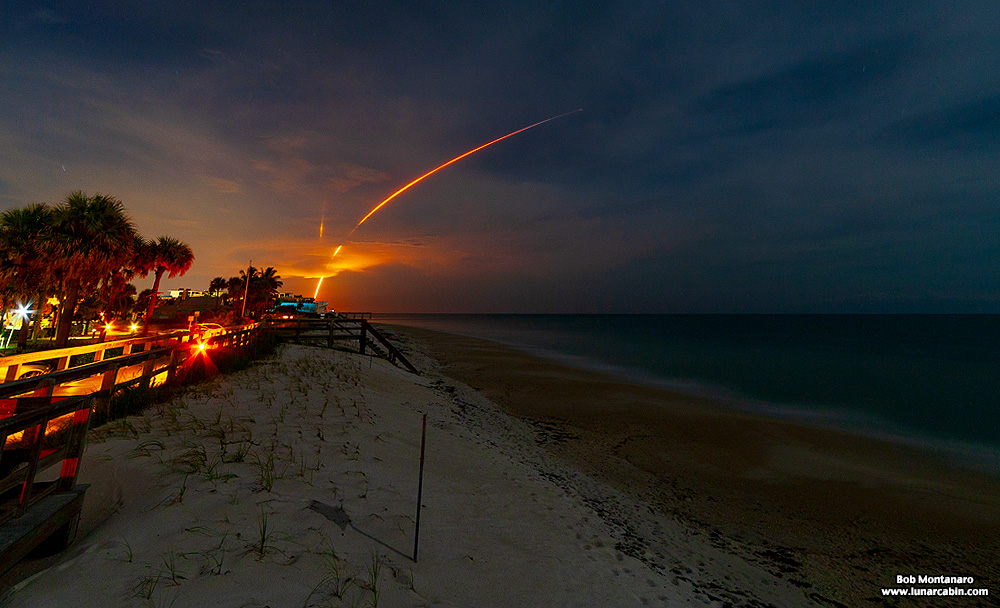 |
|
Starlink 9/BlackSky (Falcon 9) 7 August 2020 |
Space Launch Complex 39A
Kennedy Space Center |
| A SpaceX Falcon 9 rocket launches the tenth batch of 57 Starlink satellites along with two Earth observation satellites for BlackSky Global on 7 August 2020 at 1:12 a.m. from Launch Complex 39A at Kennedy Space Center. The rocket arcs out over the Atlantic Ocean under moonlit skies as seen in this time exposure from Vero Beach, Florida. The Starlink satellites will eventually form a constellation around the Earth providing global satellite-based internet access. | |
EXCERPTS FROM THE SPACEX PRESS RELEASE |
|
Falcon 9’s first stage previously supported Crew Dragon’s first demonstration mission to the International Space Station, launch of the RADARSAT Constellation Mission [from Vandenberg Air Force Base, California], and the fourth and seventh Starlink missions. Following stage separation, SpaceX will land Falcon 9’s first stage on the “Of Course I Still Love You” droneship, which will be stationed in the Atlantic Ocean. The BlackSky Global spacecraft will deploy sequentially beginning 1 hour and 1 minute after liftoff, and the Starlink satellites will deploy approximately 1 hour and 33 minutes after liftoff. Starlink satellites will be deployed in a circular orbit, as was done on the first through fourth Starlink missions. Additionally, all Starlink satellites on this flight are equipped with a deployable visor to block sunlight from hitting the brightest spots of the spacecraft – a measure SpaceX has taken as part of our work with leading astronomical groups to mitigate satellite reflectivity. |
|
 |
|
| Note the yellow vertical streak above the beginning of the arc at left. This is called a sun pillar according to the United Kingdom’s Met Office caused by “. . .light reflecting from the horizontal surfaces of slowly falling hexagonally shaped ice crystals that are present in cirriform clouds, especially cirrostratus clouds.” These are the same types of clouds evident in the night sky in the image. The ice crystals caught the bright light of ignition and the beginning of the launch. | |
All contents copyright Lunar Cabin |
|